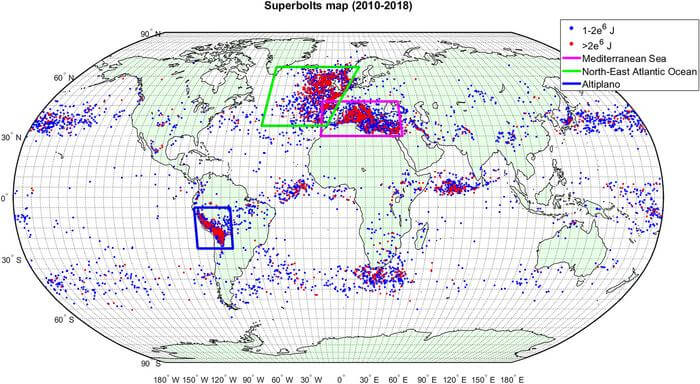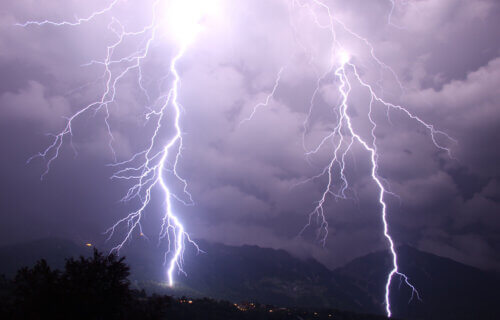WASHINGTON — Getting struck by lightning is a painful and often deadly event. However, getting struck by a “superbolt” could literally destroy buildings or vehicles of all kinds. Now, scientists have discovered what causes a superbolt — a blast of lightning 1,000 times more powerful than the average bolt — and where they are most likely to strike.
The average lightning bolt carries 300 million volts. Superbolts are obviously deadlier and have enough juice to cause major damage to buildings, bridges, and ships.
“Superbolts, even though they’re only a very, very tiny percentage of all lightning, they’re a magnificent phenomenon,” says Avichay Efraim, a physicist at the Hebrew University of Jerusalem and lead author of the study, in a media release.
Superbolts are rare, making up less than one percent of lightning strikes. The chances of seeing one — and possibly getting hit by one — are extremely low. However, the new research suggests it is more likely to appear when a storm cloud’s electrical charging zone is close to a hotspot like the ocean surface and on top of tall mountains.
Previous research has found that superbolts favor areas over the Northeast Atlantic Ocean, the Mediterranean Sea, and the Altiplano in Peru and Bolivia. The Altiplano is one of the tallest plateaus on Earth. This intrigued scientists to find out why superbolts often cluster in these areas.
Storm clouds are frequently 7.5 to 11 miles in height. At such high elevations, they are subject to a range of temperatures. To create the perfect conditions for lightning, a cloud would need the air temperature to be about 32 degrees Fahrenheit. Just barely at freezing temperatures, the cloud undergoes electrification along with a “charging zone” to power up the bolt. In the current study, Efraim and the team researched whether changes in freezing zone altitude would affect the potency of the charging zone. If there is little to no charging zone, it’s likely superbolts would not have enough strength.

The team gathered information on the time, location, and energy of lightning through radio wave detectors and past weather data of lightning strikes. The information allowed them to look deeper into the type of environment where a storm would start, such as the height of the cloud and charging zone, how far it is from land or ocean, air and cloud temperature, and aerosol concentrations.
Despite past research finding a relationship between aerosols and superbolt strength, the study authors did not observe a link between the two. The most important factor to an energized lightning strike was actually the close distance between the cloud’s charging zone and the surface of the land or ocean. The shorter distance causes less electrical resistance, which leads to a higher current and more powerful lightning.
The areas that have been hit most with superbolts such as the Altiplano and the northeast Atlantic Ocean all show a similar pattern. Scientists see a small distance between lightning charging zones and these surfaces.
“The correlation we saw was very clear and significant, and it was very thrilling to see that it occurs in the three regions,” Efraim adds. “This is a major breakthrough for us.”
Understanding how superbolts are formed and what area they are most likely to hit can help with warning nearby communities of a potential strike. Additionally, the changing climate on Earth could also affect the rate of superbolt lightning appearing in the future. According to Efraim, warmer temperatures would make air temperatures increase and, in theory, weaken lightning since they need to be close to 32 degrees Fahrenheit. However, moisture in the atmosphere could worsen the situation.
Further climate change research will need to unveil whether we are heading toward a future with stronger or weaker lightning storms. For now, the authors are using the opportunity to further study superbolt formation, including other factors that charge them up like magnetic fields or changes in the solar cycle.
“There is much more unknown, but what we’ve found out here is a big piece of the puzzle,” Efraim says. “And we’re not done yet. There’s much more to do.”
The study is published in the Journal of Geophysical Research: Atmospheres.


Thank you for swapping out the picture of the wrong breed for this excellent video about the Irish Water Spaniel!